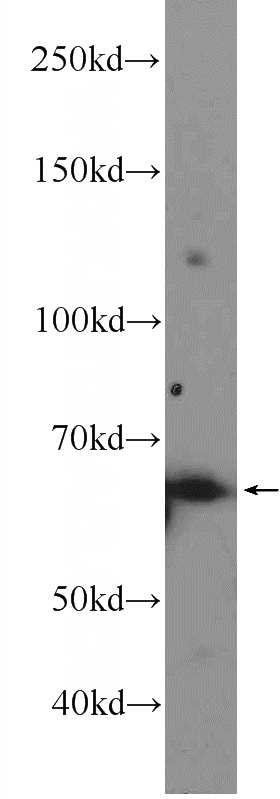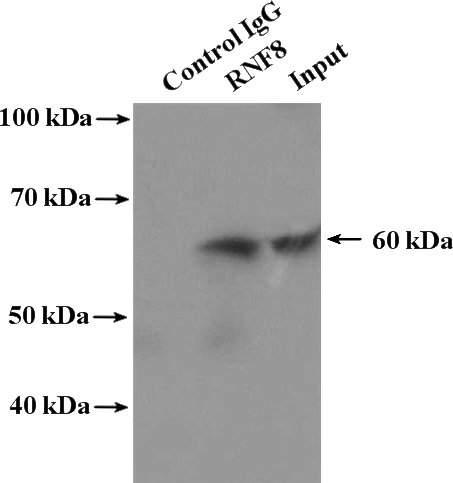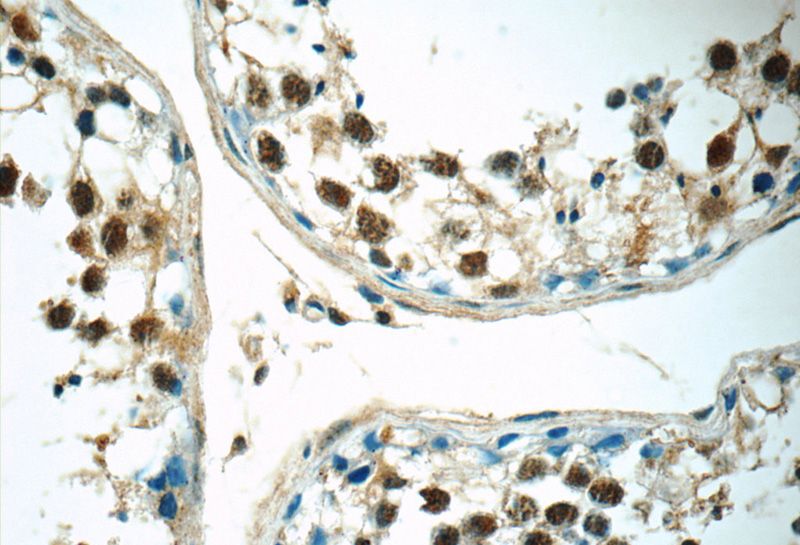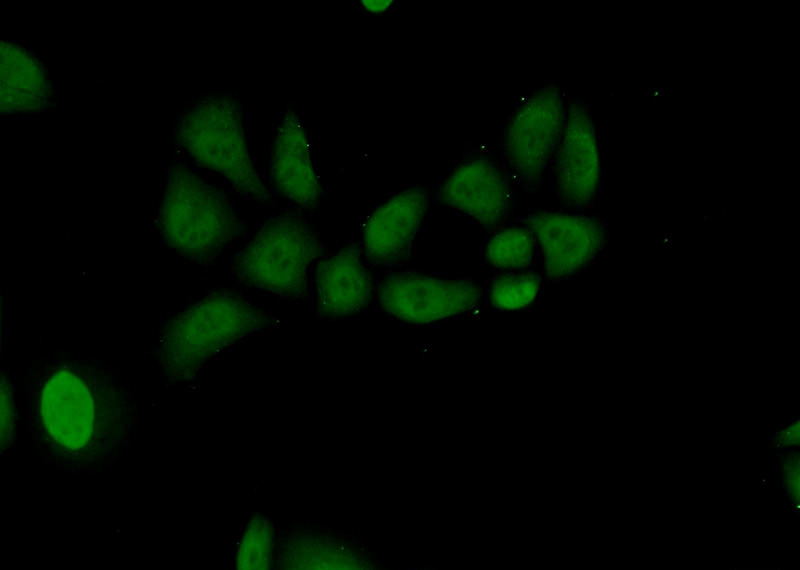-
Product Name
RNF8 antibody
- Documents
-
Description
RNF8 Rabbit Polyclonal antibody. Positive IF detected in HeLa cells. Positive IHC detected in human testis tissue. Positive WB detected in HeLa cells, HEK-293 cells. Positive IP detected in HeLa cells. Observed molecular weight by Western-blot: 56-60 kDa
-
Tested applications
ELISA, WB, IHC, IF, IP
-
Species reactivity
Human,Mouse,Rat; other species not tested.
-
Alternative names
FLJ12013 antibody; KIAA0646 antibody; ring finger protein 8 antibody; RNF8 antibody
-
Isotype
Rabbit IgG
-
Preparation
This antibody was obtained by immunization of RNF8 recombinant protein (Accession Number: NM_003958). Purification method: Antigen affinity purified.
-
Clonality
Polyclonal
-
Formulation
PBS with 0.1% sodium azide and 50% glycerol pH 7.3.
-
Storage instructions
Store at -20℃. DO NOT ALIQUOT
-
Applications
Recommended Dilution:
WB: 1:200-1:2000
IP: 1:200-1:2000
IHC: 1:20-1:200
IF: 1:20-1:200
-
Validations

HeLa cells were subjected to SDS PAGE followed by western blot with Catalog No:114764(RNF8 Antibody) at dilution of 1:600

IP Result of anti-RNF8 (IP:Catalog No:114764, 4ug; Detection:Catalog No:114764 1:600) with HeLa cells lysate 3200ug.

Immunohistochemistry of paraffin-embedded human testis tissue slide using Catalog No:114764(RNF8 Antibody) at dilution of 1:50 (under 40x lens)

Immunofluorescent analysis of HeLa cells using Catalog No:114764(RNF8 Antibody) at dilution of 1:50 and Alexa Fluor 488-congugated AffiniPure Goat Anti-Rabbit IgG(H+L)
-
Background
RNF8, also named as KIAA0646 or E3 ubiquitin-protein ligase RNF8, is a 485 amino acid protein, which contains one RING-type zinc finger and one FHA domain. RNF8 localizes in the nucleus and belongs to the RNF8 family. E2-E3 ubiquitin ligase complex is composed of the RNF8 homodimer and a E2 heterodimer of UBE2N and UBE2V2. E3 ubiquitin-protein ligase that plays a key role in DNA damage signaling via 2 distinct roles: by mediating the 'Lys-63'-linked ubiquitination of histones H2A and H2AX and promoting the recruitment of DNA repair proteins at double-strand breaks (DSBs) sites, and by catalyzing 'Lys-48'-linked ubiquitination to remove target proteins from DNA damage sites.
Related Products / Services
Please note: All products are "FOR RESEARCH USE ONLY AND ARE NOT INTENDED FOR DIAGNOSTIC OR THERAPEUTIC USE"
